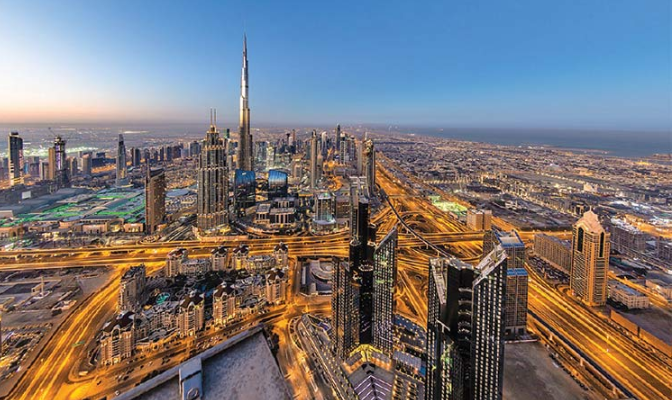Government initiatives have stimulated the residential and commercial sectors, whilst the country’s hospitality and retail segments continue to benefit from diversification efforts – according to the H1, 2019 Riyadh Market Snapshot by global real estate consultancy firm CBRE.
Despite the increase in upcoming supply, Riyadh’s residential market is expected to stabilise over the next 12 months.
This is a direct result of Government efforts to activate the supply of residential units and stimulate demand, through initiatives like the permanent Special Privilege Iqama, which allows non-nationals to purchase real estate. Restructuring and financial support initiatives, by the Ministry of Housing, for households with incomes higher than SAR 14,000 have also had a positive effect on the market. The residential market is likely to receive a further boost due to disruptive building technologies, such as 3D printing, augmented reality, and recent agreements such as the deal with Al Kathiri Holding Company to produce and use 3D-printed concrete for ministry projects.
The disparity between rising deal volumes and the performance of the leasing sector, demonstrates how investors appear to be taking a longer-term view on the residential market looking beyond softening rentals and focusing on the availability of attractive prices and the increasing flexibility of payment plans offered across both completed and off-plan projects.
King Khalid International Airport witnessed increased activity during the 2019 Ramadan and Eid season, with over 2.3 million travelers, positively impacting hotel demand.
As part of the plans to further increase average length of stay and to generate a more compelling all-year-round leisure offering, various new tourism infrastructure developments are being delivered. These projects include Qiddiya and Ad Diriyah Gate Development within Riyadh, as well as other touristic projects across KSA, such as The Red Sea Project and NEOM, the latter of which has recently experienced its first commercial flight from the capital. These projects, as well as the complementary infrastructure and real estate development surrounding these, are expected to boost the hotel sector even further.
With increasing visitor numbers, Riyadh’s hotels are expected to continue generating positive occupancy growth, with a modest 0.4 per cent increase year-to-date.
In total, there are over 4,000 keys currently under construction in the city, with the aim of accommodating the country’s emergent entertainment and tourism sector.
According to the CBRE report, Riyadh’s retail demand remains heavily oriented towards quality retail destinations, with prime malls continuing to demonstrate higher occupancy rates and lease rates than secondary locations. Nevertheless, retailers are continuously looking for flexibility from landlords to help soften the impact of changes in sales volumes. Development activity across the retail sector remains buoyant with more than 1 million m_ of gross leasable area set to be handed over between 2020 and 2021.
Rental rates within the retail sector have fallen with super regional and regional mall rental rates down 7 per cent year-on-year according to CBRE’s Market Snapshot. However, the introduction of cinemas and other entertainment offerings into the city’s malls is likely to increase footfall in the long-term.
The growing prevalence of omnichannel retail will further stimulate the capital’s retail sector. The report suggests that diversification will prove key in the coming years with an expected 1.5 million sqm of GLA expected to enter the retail market by 2022.
Despite large office supply deliveries expected in the city, Riyadh is continuing to witness demand for premium office space. The successful implementation of policies, such as Saudization, as evidenced in the decreased unemployment rate among KSA nationals in Q1 2019, is expected to further bolster the commercial sector.
Total office stock in Saudi Arabia’s capital stood at 4.1 million sqm of gross leasable area (GLA) as of H1 2019, with an additional 2.1 million sqm of GLA expected to be delivered by 2022.
Among these supply deliveries, King Abdullah Financial District is among the largest and most-awaited, expected to contribute significantly to office supply figures upon completion. The continued development of the Riyadh Metro is also expected to impact the office sector, with commercial properties in proximity to key metro stations likely to benefit from increased accessibility and connectivity.
Despite the positive long-term outlook, rental performances have continued to record pressures within both the primary and secondary office locations with rental rates down 2 per cent and 5 per centyear-on-year respectively. However, increased incentives by landlords, discounts for long-term leases, energy efficient units and unique design offerings are expected to help mitigate declines in the market.



